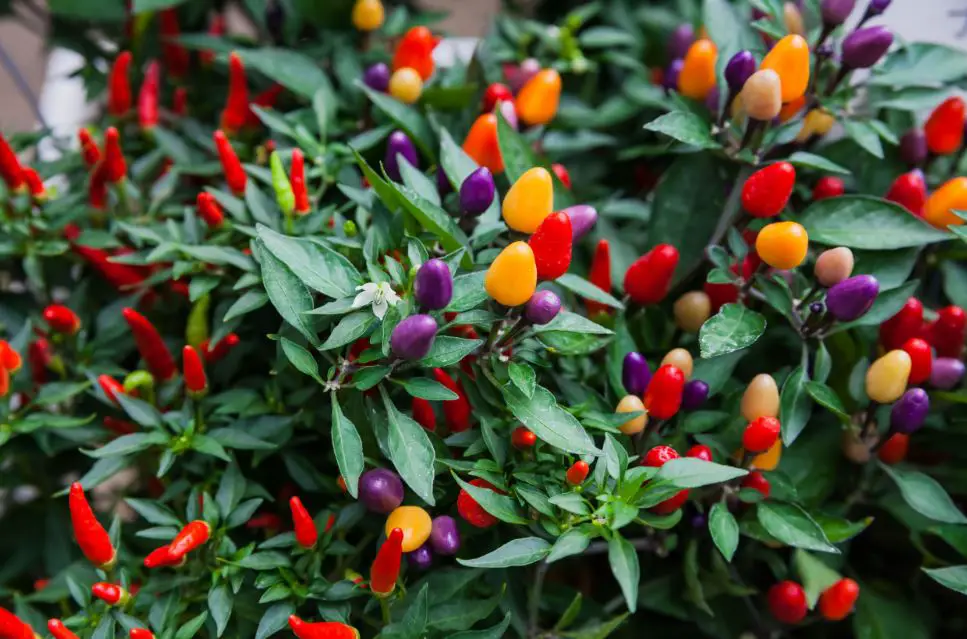The American ideal of owning a house and a white picket fence with green grass is typified by turf lawns. Sadly, this utopian vision involves a monoculture of turf grass, which requires special lawn care that is bad for the surrounding ecology and fauna.

What are Ornamental Peppers?
The location of the fruit production on the plant distinguishes ornamental pepper plants from common garden varieties of peppers. Garden kinds have their fruit concealed within the foliage, while decorative versions have their fruit growing at the ends of the stems. Moreover, ornamental pepper plants often have a more compact growth pattern.
Gardeners often ask, “Can you eat ornamental pepper?” It should be mentioned that all varieties of pepper plants’ leaves are poisonous to both people and animals since they are nightshade plants. The fruit that grows on decorative pepper plants is delicious, but there is a catch, just as with garden peppers. The flavor of ornamental peppers comes in a wide variety.
These hot pepper cultivars may be employed in spicy food or in a fun game of dare among grown-up companions, but most do not have the same taste profile as garden peppers. Moreover, caution should be used while planting spicy ornamental peppers close to young children or animals. They entice you to try them because of their adorable sizes and forms.
Hot and Edible Varieties of the Ornamental Pepper Plant
The growth requirements for ornamental pepper plants are similar to those for garden kinds. Pepper plants typically prefer full light and rich, draining soil. They often have good resistance to illness and deer. During growing decorative types inside, gardeners should be extra vigilant for aphid or whitefly infestations.
Yellow, orange, red, purple, and white are just a few of the lovely fruit hues that grow on these ornamental plants. In certain types, the fruit undergoes many color changes as it ripens. While some species of ornamental peppers have rich burgundy or black leaves, the foliage may also be green. There are several cultivars with striped or striped leaves.
Consider these well-liked types if you want to add attractive peppers to your collection of indoor plants or outdoor landscaping:
- Aurora: Aurora is a medium to spicy pepper with a 30,000–50,000 Scoville heat index. As the fruit is completely developed, it transitions from green to purple to orange to red.
- Basket of Fire: Scoville ratings for Basket of Fire peppers hover around 80,000, making them perfect for hanging planters. Fruits have a creamy yellow, orange, and red color spectrum.
- Black Pearl: Black Pearl peppers remain hotter than jalapenos with a Scoville rating of 10,000 and 30,000. The completely mature crimson fruit contrasts wonderfully with the dark foliage.
- Calico: Calico is a variegated ornamental pepper variety with leaves that are a multicolored combination of light green, creamy white, and purple. The fruit possesses between 50,000 and 70,000 Scoville units and ripens to a reddish hue.
- Chinese 5 Color: The Chinese 5 Color pepper’s 1-inch (2.5 cm) cone-shaped fruits have a heat level of 30,000 to 50,000 Scoville units, making them perfect for hot salsa.
- Chilly Chili: Chilly Chili is a mild ornamental pepper variety with a Scoville heat level of less than 1000. The fruit is 2 to 3 inches (5-7.6 cm) long and becomes crimson as it ripens.
- Medusa: While the pencil-shaped berries of this prolific pepper plant seem to be incredibly fiery, its Scoville rating is below 1000. When it ripens, the fruit turns from creamy white to scarlet.
- NuMex Twilight: These indeterminate plants provide an abundance of multicolored fruit to liven up any garden corner as NuMex Twilight peppers move from beautiful purple to yellow, orange, and cherry red. At between 30,000 and 50,000 Scoville units, mature peppers are hot.
- Sangria: Sangria peppers resemble cayenne peppers but are more colorful and have a moderate Scoville rating of around 5000.
- Tangerine Dream: This pepper has a sweet decorative flavor and a little fiery rating of under 100 Scoville units. When mature, the little, cone-shaped fruit becomes orange.


